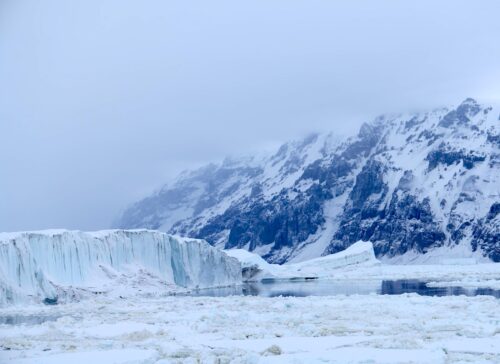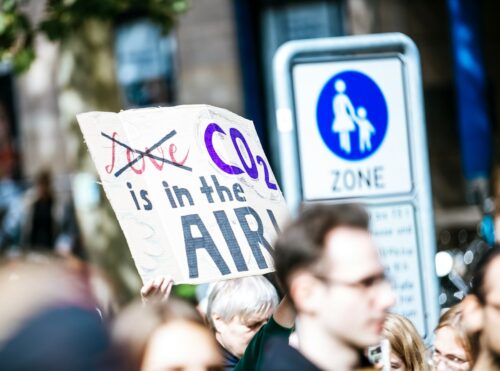 Headline run by The Independent last Friday (20 July 2018):
Headline run by The Independent last Friday (20 July 2018):
‘A death sentence for polar bears’: Trump administration seeks changes to endangered species protections: Conservation groups are already vowing to sue the Donald Trump administration if the revisions go into effect
Such over-the-top rhetoric is as predictable as puddles after a cloud-burst (see a statement by the WWF here, and the Center for Biological Diversity (source of the “death sentence for polar bears” claim here) but the proposed changes only apply to future listings, not listings already in place. See the USFWS press release below.
However, both The Independent and ABC News featured polar bears in their stories, a species listed as threatened in 2008.
It would be hard to beat the irony of ABC: it ran video of fat Kaktovik polar bears behind their anchor as he delivered the ESA story.
The Independent not only used the “death sentence to polar bears” quote but included the video clip from last year of the dying Baffin Island bear even though it is very likely the bear was emaciated due to cancer rather than lack of food (Crockford 2018).
Why would anyone mention polar bears? Why is the Center for Biological Diversity so afraid?
Because if polar bears face a delisting challenge, the new rules apply.
The problem is, too many folks now know the science behind the polar bear ESA listing is weaker than frazzle ice.
If someone proposes that polar bears be delisted, the folks who promoted the listing have a problem.
A delisting assessment would bring the new ESA rules into play, including the one that says the delisting process should be given the same scrutiny as the listing process.
“The agencies are also clarifying that decisions to delist a species are made using the same standard as decisions to list species. In both cases, that standard is whether a species meets the established ESA definition of an endangered species or threatened species.”
It would also bring the proposed new definition of “the foreseeable future” into the picture:
“For the first time, the agencies are proposing an interpretation of “foreseeable future” to make it clear that it extends only as far as they can reasonably determine that both the future threats and the species’ responses to those threats are probable.”
For polar bears, this means that models of future Arctic sea ice habitat and species survival models must show some skill.
However, sea ice predictions since 2005 have performed poorly (Jahn et al. 2016; Stroeve et al. 2007, 2014; Overland and Wang 2013; Wang and Overland 2012). Predictions have been so bad that the IUCN Polar Bear Specialist Group abandoned using CO2-dependent ice models for their 2015 assessment (Regehr et al. 2016).
In addition, the polar bear survival models that got the bears listed by the ESA in the first place also failed: not only did sea ice levels predicted for mid-century actually happen before the ink was dry on the 2007 report (Amstrup et al. 2007) but the loss of 2/3 of the global population of bears predicted to occur as a result of that ice loss simply didn’t occur (Amstrup et al. 2007; Crockford 2017, 2018; Crockford and Geist 2018).
In other words, champions of polar bears and Arctic seals as ‘threatened’ species have cause to worry about the proposed ESA changes and that’s why they’re in a panic.
But really, ESA protection since 2008 has done nothing to increase the survival of polar bears (in the US or elsewhere).
Even if polar bears were delisted from the ESA tomorrow, they would still be well protected in the US by the powerful Marine Mammal Protection Act of 1972.
That’s the legislation that allowed polar bears to recover from decades of wanton slaughter and not only is it still in place, it’s unaffected by ESA status.
The next few months should prove very interesting.
MORE READING
Press Release: U.S. Fish and Wildlife Service and NOAA Fisheries Seek Public Input on Proposed Reforms to Improve & Modernize Implementation of the Endangered Species Act (July 19, 2018)
Continuing efforts to improve how the Endangered Species Act (ESA) is implemented, the U.S. Fish and Wildlife Service and National Oceanic Atmospheric Administration (NOAA) Fisheries today proposed revisions to certain regulations to ensure clarity and consistency. The changes incorporate public input, best science and best practices to improve reliability, regulatory efficiency and environmental stewardship.
“The Trump Administration is dedicated to being a good neighbor and being a better partner with the communities in which we operate. One thing we heard over and over again was that ESA implementation was not consistent and often times very confusing to navigate.
We are proposing these improvements to produce the best conservation results for the species while reducing the regulatory burden on the American people,” said U.S. Fish and Wildlife Service Principal Deputy Director Greg Sheehan. “We value public input and have already incorporated initial public comments we received in response to our notices of intent published in 2017. We encourage the public to provide us additional feedback to help us finalize these rules.”
“We work to ensure effective conservation measures to recover our most imperiled species,” said Chris Oliver, NOAA Assistant Administrator for Fisheries. “The changes being proposed today are designed to bring additional clarity and consistency to the implementation of the act across our agencies, and we look forward to additional feedback from the public as part of this process.”
Several proposed changes relate to section 4 of the ESA, which deals with procedures for listing species, recovery and designating critical habitat (areas essential to support the conservation of a species). First, the agencies propose to revise the procedures for designating critical habitat by reinstating the requirement that they will first evaluate areas currently occupied by the species before considering unoccupied areas. Second, the agencies propose to clarify when they may determine unoccupied areas are essential to the conservation of the species.
While the agencies recognize the value of critical habitat as a conservation tool, in some cases, designation of critical habitat is not prudent. Accordingly, they are proposing a non-exhaustive list of circumstances where they may find that designation for a particular species would not be prudent. The agencies anticipate that such not-prudent determinations will continue to be rare and expect to designate critical habitat in most cases.
The ESA defines a threatened species as one that is likely to become in danger of extinction within the “foreseeable future.” For the first time, the agencies are proposing an interpretation of “foreseeable future” to make it clear that it extends only as far as they can reasonably determine that both the future threats and the species’ responses to those threats are probable.
The agencies are also clarifying that decisions to delist a species are made using the same standard as decisions to list species. In both cases, that standard is whether a species meets the established ESA definition of an endangered species or threatened species.
The U.S. Fish and Wildlife Service is separately proposing to rescind its blanket rule under section 4(d) of the ESA, which automatically conveyed the same protections for threatened species as for endangered species unless otherwise specified. This brings its regulatory approach to threatened species protections in line with NOAA Fisheries, which has not employed such a blanket rule.
The proposed changes would impact only future listings or downlistings and would not apply to those species already listed as threatened. The U.S. Fish and Wildlife Service will craft species-specific 4(d) rules for each future threatened species determination that are necessary and advisable for the conservation of the species, as has been standard practice for most species listed as threatened in recent years.
“No two species are the same, and so by crafting species-specific 4(d) rules for threatened species, we can tailor appropriate protections using best available science according to each species’ biological needs,” said Sheehan. “By creating a clearer regulatory distinction between threatened and endangered species, we are also encouraging partners to invest in conservation that has the potential to improve a species’ status, helping us work towards our ultimate goal: recovery.”
Under section 7 of the ESA, other federal agencies consult with the U.S. Fish and Wildlife Service and NOAA Fisheries to ensure their actions are not likely to jeopardize the continued existence of any endangered or threatened species or result in “destruction or adverse modification” of critical habitat.
The proposed rule simplifies and clarifies the definition of “destruction or adverse modification” by removing redundant and confusing language. The proposed rule is not intended to alter existing consultation practice; rather, it seeks to revise and clarify language that was confusing to other federal agencies and the public.
Additional proposed revisions to the consultation regulations will clarify whether and how the U.S. Fish and Wildlife Service and NOAA Fisheries consider proposed measures to avoid, minimize or offset adverse effects to listed species or their critical habitat when conducting interagency consultations and will improve the consultation process by clarifying how biological opinions and interagency submissions should be formulated.
The proposed rules are available here and will publish in the Federal Register in coming days, including detailed information on how the public can submit written comments and information concerning these provisions.
Comments must be received within 60 days of publication. All comments will be posted on http://www.regulations.gov. This generally means any personal information provided through the process will be posted.
See also:
Proposed Section 4 (listing and critical habitat) rule: Federal Register notice.
ESA Implementation (20 July 2018): “The proposed rules will publish in the Federal Register on July 25, 2018, and will provide detailed information on how the public can submit written comments and information concerning these provisions.
Comments for each notice must be received within 60 days, by September 24, 2018. All comments will be posted on http://www.regulations.gov. This generally means any personal information provided through the process will be posted.”
Read rest at Polar Bear Science



















Well at least the seals and walrus would be tickled pink . Less polar bears to eat their babies . A win /win .
Reality…. the polar bears will be just fine with a much higher probability of outlasting humans .
I suspect that the true reason the environmentalists are upset is they plan to use polar bears and other species as a means to force their draculan agenda. More reasonable ESA criteria would undermine this goal.
Most of these enviromentalists groups are liberals and democrats they want to file frivolous lawsuits over something that’s only in their minds these Greens are idiots all the NRDC,EDF,WWF,The Sierra Club,The Center for Biological Diversity they all show how stupid they are with frivolous lawsuits